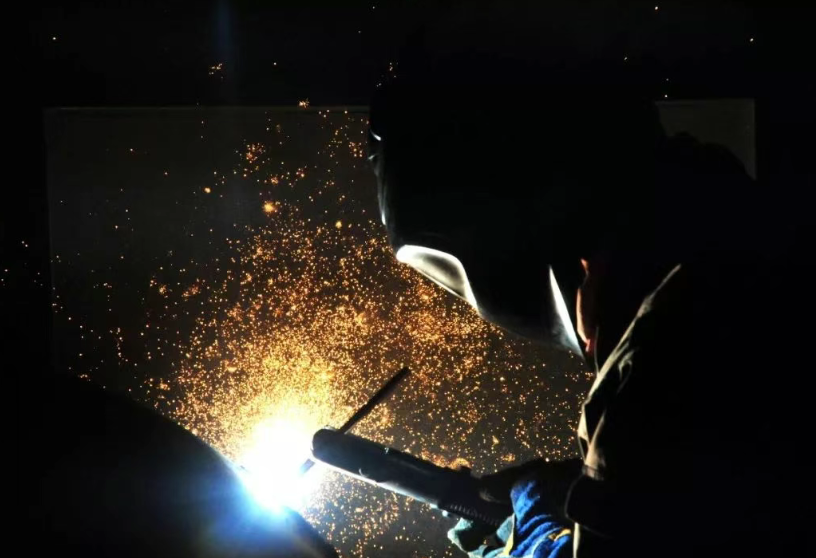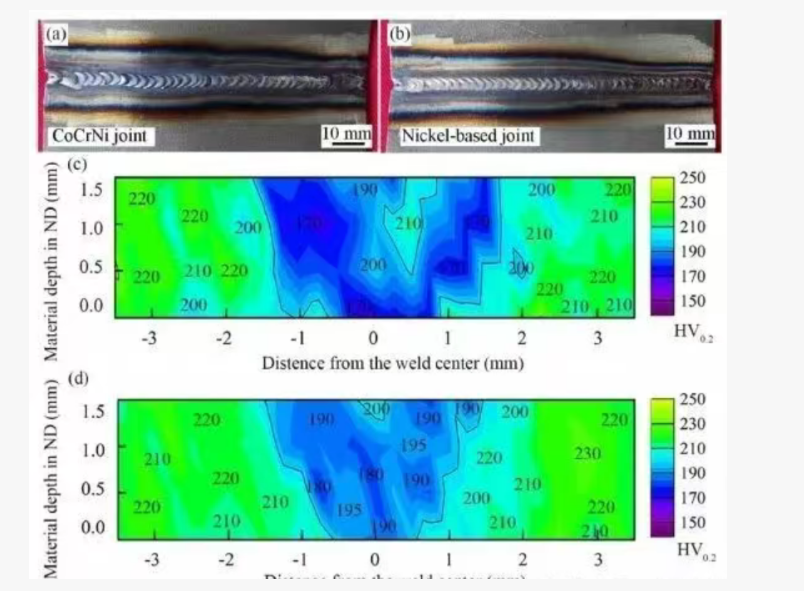What Are Advanced Welding Technologies?
The development of science and technology has driven continuous progress in welding technology, leading to the emergence of new welding methods. Advanced welding technologies refer to advanced joining methods beyond conventional ones (such as shielded metal arc welding, submerged arc welding, and conventional gas metal arc welding). The emergence and research of these advanced welding methods result from the interdisciplinary integration. Advanced welding technologies (e.g., high-energy beam welding, laser-arc hybrid welding, vacuum diffusion welding, and robotic welding) have been applied in electronics, energy, automotive, aerospace, nuclear industry, and other sectors. They play a crucial and irreplaceable role in welding special materials and structures, promoting social and technological progress.
The welding of advanced materials is closely related to the development of high-tech and has unique and irreplaceable functions. After rapid development in the 20th century, welding technology, as an important link in modern industry, has entered the 21st century with a mature system, shifting from manual manufacturing to mechanized, automated, information-based, and intelligent manufacturing. This marks a new era in welding science and engineering.
(1) Laser-Arc Hybrid Welding
High-energy beam processing technology is hailed as the most promising processing technology in the 21st century, believed to “bring revolutionary changes to material processing and manufacturing technology,” and is currently the fastest-growing and most researched technical field.
The development of welding equipment toward large-scale has two meanings: one is the increase in equipment power, and the other is the enlargement of parts welded by the equipment. Due to the high one-time investment in advanced welding equipment, especially laser welding and electron beam welding equipment, increasing power, improving penetration depth and welding process stability can relatively reduce welding costs, making it acceptable to the industry. Therefore, hybrid welding technology centered on lasers has attracted attention. In fact, laser-arc hybrid welding was proposed as early as the 1970s, but stable industrial applications emerged only in recent years, mainly benefiting from the development of laser technology and arc welding equipment, especially the improvement of laser power and arc control technology. Laser-arc hybrid mainly involves the combination of laser with tungsten inert gas (TIG) arc, plasma arc, and active arc. Through the interaction between laser and arc, the shortcomings of each welding method can be overcome, resulting in a good hybrid effect.
Laser-arc hybrid welding significantly improves welding efficiency, mainly based on two effects: first, the high energy density leads to a higher welding speed and reduced heat loss of the workpiece; second, the superposition effect of the interaction between the two heat sources. When welding steel, the laser plasma stabilizes the arc; at the same time, the arc enters the keyhole of the molten pool, reducing energy loss. The combination of laser and TIG can significantly increase the welding speed, about twice that of TIG welding. The tungsten electrode wear is also greatly reduced, increasing its service life; the groove angle can also be significantly reduced, and the weld cross-sectional area is similar to that of laser welding. Compared with laser-single arc hybrid welding, laser-double arc hybrid welding can reduce the welding heat input by 25% and increase the welding speed by about 30%.
The main advantages of laser-arc (or plasma arc) hybrid welding are improved welding speed and penetration depth. Due to arc heating, the metal temperature rises, reducing the reflectivity of the metal to the laser and increasing the absorption of light energy. This method has been tested on low-power CO₂ laser welding, as well as 12kW CO₂ laser welding and 2kW YAG lasers with optical fiber transmission, laying the foundation for robotic laser-arc (or plasma arc) hybrid welding. In recent years, hybrid welding technology born from laser-arc hybrid has achieved significant development, and its application in complex components in aerospace, military, and other sectors has received increasing attention. Currently, hybrid welding technology combining high-energy beams with different arcs has become one of the hotspots in the field of high-energy beam welding.
(2) Friction Stir Welding
Friction Stir Welding (FSW) is a patented welding technology developed by the Welding Institute (TWI) of the United Kingdom in the early 1990s. It can weld non-ferrous metals that are difficult to weld using fusion welding methods.
Friction stir welding has advantages such as simple joining process, fine grains in the welded joint, good fatigue performance, tensile performance, and bending performance, no need for welding wires or shielding gases, no arc light, and low residual stress and deformation after welding. It has been applied in the aerospace industry of developed countries in Europe and America, and has been successfully used in the welding of aluminum alloy thin-walled pressure vessels working at low temperatures, completing the straight butt joint of longitudinal welds and the circumferential butt joint of circular welds. This technology has been adopted in the new structural design of new vehicles and applied in aerospace, transportation, automotive manufacturing, and other industrial sectors.
(3) Vacuum Diffusion Welding
The continuous emergence of advanced materials poses new challenges to joining technologies. The joining of many new materials, such as heat-resistant alloys, high-tech ceramics, intermetallic compounds, and composite materials, especially the joining of dissimilar materials, is difficult to achieve using conventional fusion welding methods, thus solid-state diffusion bonding and other technologies have emerged. For example, superplastic forming-diffusion welding technology has been successfully applied in titanium alloy honeycomb structures of aircraft. Ceramics and metals can be joined by diffusion welding; the application of transient liquid phase diffusion welding technology has solved many difficult joining problems of hard materials that could not be solved by fusion welding in the past.
Solid-state joining can be divided into two categories. One is the joining method with low temperature, high pressure, and short time, which promotes close contact of the workpiece surface and oxide film rupture through local plastic deformation. Plastic deformation is the dominant factor in forming the joint. Such joining methods include friction welding, explosion welding, cold pressure welding, and hot pressure welding, which are usually called pressure welding. The other is the diffusion bonding method with high temperature, low pressure, and relatively long time, generally carried out in a protective atmosphere or vacuum. This joining method produces only minimal plastic deformation, and interface diffusion is the dominant factor in forming the joint. Such joining methods mainly include diffusion welding, such as vacuum diffusion welding, transient liquid phase diffusion welding, hot isostatic pressing diffusion welding, and superplastic forming-diffusion welding.
In addition to the continuous emergence of advanced welding methods and new processes (the above are just a few examples), the level of mechanization and automation of various welding methods is constantly improving. The progress of electronic technology, sensing technology, computer, and control technology has greatly promoted the development of the welding discipline, making welding automation move toward intelligent control. In particular, the large-scale introduction of welding robots has broken through the traditional rigid automation mode of welding, opened up a new mode of flexible automation in welding, and provided a broader development space for welding technology. Welding has become an indispensable processing method in modern manufacturing. Moreover, with the progress of science and technology and social and economic development, the application fields of advanced welding/joining will continue to expand.
(4) Automated and Intelligent Welding
Mechanization and automation are important means to improve welding productivity, ensure product quality, and improve working conditions. The automation of welding production is the future development direction of welding technology. Improving the efficiency and quality of welding production has certain limitations only from the perspective of welding processes. Welding/joining methods such as electron beam welding, laser welding, and friction stir welding have strict requirements on groove geometry and assembly quality. After automatic welding, the entire welded structure is neat, precise, and beautiful, changing the backward phenomenon of manual operation in welding workshops in the past.
As one of the important symbols of the development of modern manufacturing technology and an emerging technology industry, robots have had an important impact on various fields of high-tech industries. The complexity of welding manufacturing processes and strict requirements for welding quality, coupled with the often poor welding technology level and working conditions, make welding processes that can automate and intelligentize the welding process receive special attention. Currently, 30% to 40% of robots worldwide are used in welding technology. Welding robots were initially mostly applied in spot welding production lines in the automotive industry, and in recent years, they have gradually expanded to other production fields.
The first development focus of intelligent welding is the vision system. Currently developed vision systems can enable robots to automatically modify the torch movement trajectory according to specific conditions during welding, and some can timely adjust process parameters according to groove size.
Post time: Aug-20-2025


















